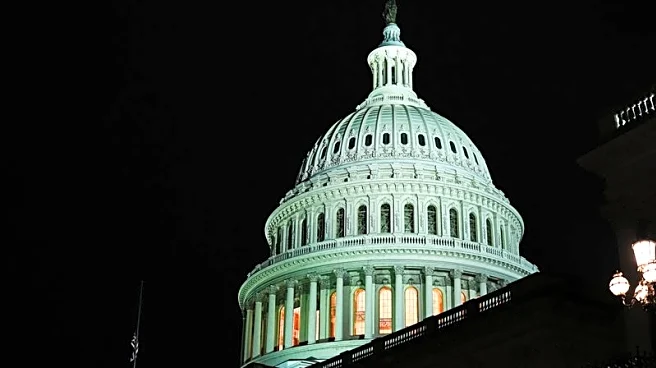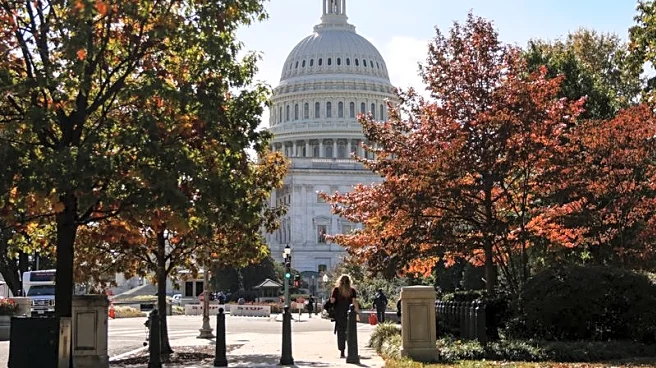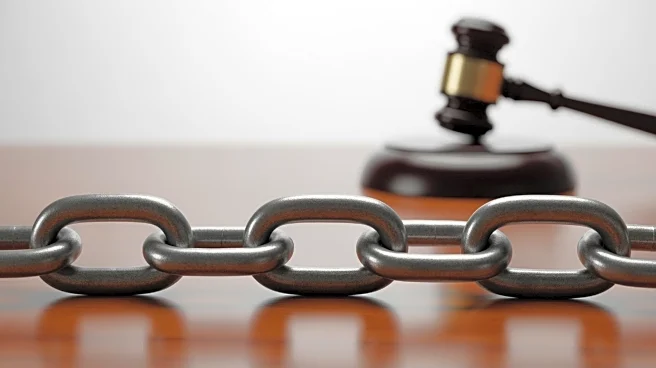What's Happening?
The longest government shutdown in U.S. history has concluded, ending a period marked by significant disruptions across various sectors. The shutdown, which lasted several weeks, resulted in widespread
consequences, including disruptions to air travel, denial of food benefits to millions, and thousands of federal workers going without paychecks. The resolution of the shutdown comes after prolonged gridlock, which had left many government operations at a standstill. The shutdown's end is expected to restore normalcy to affected services and provide relief to those impacted by the halt in government operations.
Why It's Important?
The conclusion of the government shutdown is significant as it alleviates the immediate hardships faced by federal workers and citizens reliant on government services. The shutdown had a ripple effect on the economy, with air travel disruptions affecting commerce and tourism, and the suspension of food benefits impacting vulnerable populations. The resolution is likely to stabilize these sectors and restore confidence in government functionality. However, the shutdown also highlights the vulnerabilities in government operations and the potential for political stalemates to cause widespread disruption. Stakeholders across industries and public services will be closely monitoring the government's ability to prevent future shutdowns and ensure continuity of services.
What's Next?
With the shutdown now over, federal agencies will work to resume normal operations and address the backlog of services and payments. There may be ongoing discussions among political leaders to find long-term solutions to prevent future shutdowns. The focus will likely be on creating more robust contingency plans and exploring legislative measures to ensure essential services remain operational during political impasses. Additionally, there may be calls for compensation or support for those who suffered financial losses during the shutdown.












